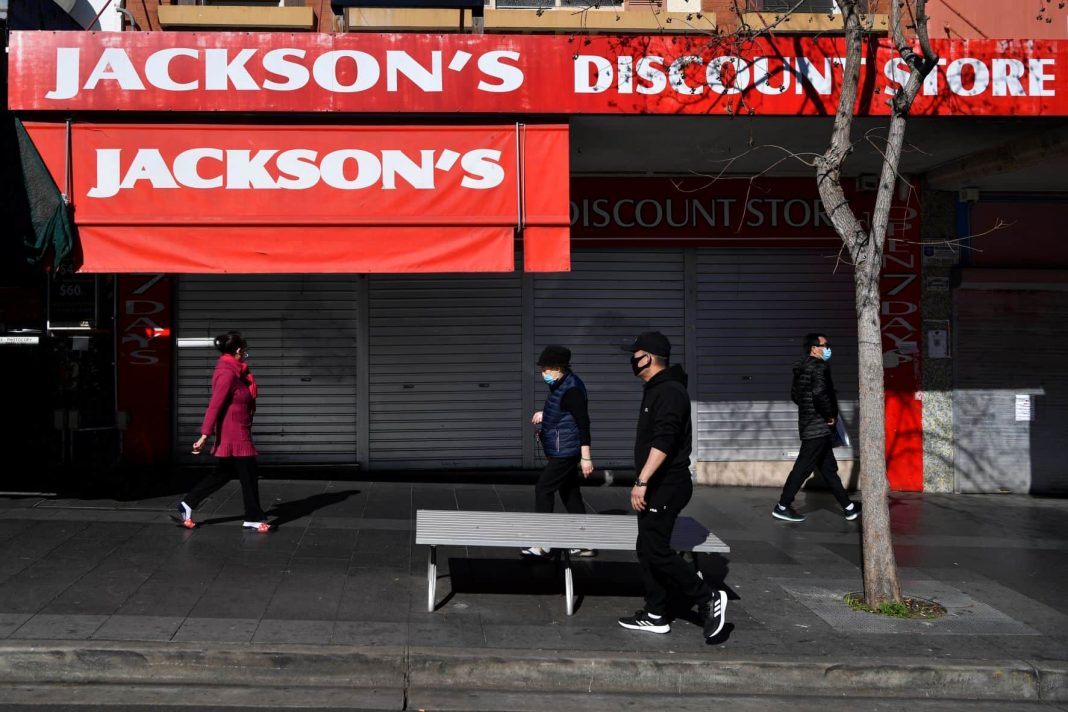Retailers are feeling the brunt of coronavirus lockdowns and there is no relief in sight with an economic downturn at risk of extending to the end of the year.
Australian Retailers Association CEO Paul Zahra says “For Lease” signs are a common feature on CBD shop fronts in Sydney and Melbourne, where outbreaks of the Delta strain of COVID-19 have occurred.
“Lockdowns have a direct impact on retail sales, as well as business and consumer confidence,” he said on Monday.
“Those impacts can be felt long after restrictions are eased, as it takes time for confidence and foot-traffic to build up again – it’s not an immediate snap back to the way things were.”
HSBC chief economist Paul Bloxham agrees that the impressive “v-shaped” recovery seen after last year’s national shutdown is unlikely to occur this time around.
He said the extension of the NSW lockdown to the end of September, Victoria’s extended lockdown and a clear statement from policymakers in NSW that cases are not expected to fall back to zero add risks to the outlook.
“This last factor means that a snap, broad-based re-opening of the NSW economy at some vaccination rate threshold seems less likely and that the borders of the remaining states and territories with NSW are set to remain heavily constrained for an extended period,” Mr Bloxham said.
But Prime Minister Scott Morrison is sticking to the national COVID-19 plan that states would start opening up at 70 and 80 per cent vaccination rates, even as some premiers appear to be baulking at opening up to NSW in the future, coming at a time of record levels of new infections.
“We know clearly that lockdowns, once you move past that level, come at a greater cost,” Mr Morrison told reporters in Canberra
“It puzzles me why anyone would want to go against a plan that has been so carefully prepared.”
Economists are now predicting an economic contraction of as much as four per cent in the September quarter as a result of mass lockdowns, which may weigh on the December quarter as well.
The latest Mastercard SpendingPulse figures, which measure in-store and online retail sales, showing a drop of 5.6 per cent in July from June.
Sales were also down 6.3 per cent from July last year.
Greater Sydney and surrounding areas were subject to stay-at-home orders in July, with Victoria, South Australia, parts of Western Australia and the Northern Territory also going in and out of lockdown over the course of the month.
Retailers are enduring lockdowns across NSW, Victoria and the ACT.
The Mastercard SpendingPulse data represents sales activity in the Mastercard payments network, coupled with survey-based estimates other forms of payment, such as cash and cheques.
Clothing retailers suffered the biggest decline in July, with sales dropping 19.9 per cent, followed by a 5.4 per cent decline in department store spending and a 1.2 per cent fall in food retailing.
Household goods spending rose 0.8 per cent.
AAP



